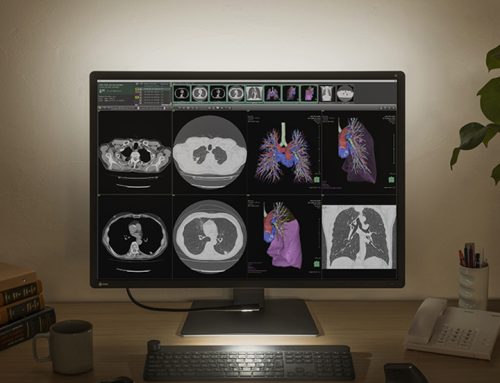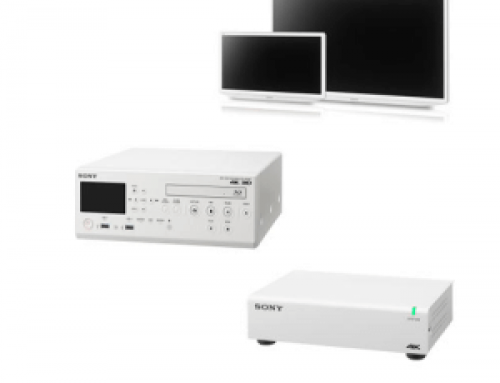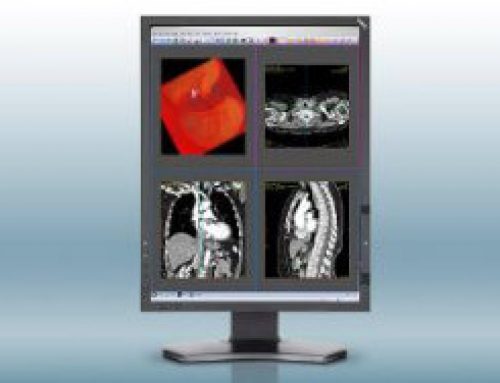Sony is bringing 4K technology to the medical industry, with two new 4K medical-grade monitors — the 31-inch LMDX310MD (LMD-X310MD) and 55-inch LMDX550MD (LMD-X550MD) models.

Sony also plans to unveil a line of 4K products designed to complement every step in the surgical workflow. The new products, planned to be available over the next several months, include a 4K medical grade recorder, 4K video over IP converter and a content management system.
“4K provides the highest resolution available today for surgery, giving physicians and their teams advanced visualization with virtually no pixilation, especially during up-close viewing,” said Julie Holodak, senior marketing manager for Sony’s Medical Systems Division. “4K technology gives a better view of general anatomy and blood vessels, allowing nurses, clinicians and surgeons to see in far more detail than even possible with HD. This is important for minimally invasive and general surgery procedures, and for more immersive education and training.”
4K delivers four times the resolution of HD, resulting in enhanced clarity, higher contrast, and more accurate color reproduction. The increased number of pixels in a 4K image means that objects displayed are more defined compared to a high-definition image. The sharper, more detailed picture helps improve surgical vision, making it ideal for ORs in hospitals, surgical centers, clinics, and other medical facilities.
Medical teams using 4K displays can see a “quad-split” view of four full HD signals (1920×1080) simultaneously. Surgeons can also zoom in on a 4K image without experiencing the pixilation normally associated with lower resolution technologies.
The increased bandwidth of 4K requires products that can properly display, distribute and store the larger 4K files. Sony’s development of a full line of 4K products will help create compatibility among visualization technologies and other devices in the medical workflow.
Sony is committed to working with other medical industry companies to develop new products and accessories that complement the 4K workflow, giving medical organizations more options in choosing the right 4K solution for their facilities.
Sony’s New 4K Monitors
Sony has lead the development of medical visualization for more than 30 years and 4K is its next generation of imaging technology. Sony already has 4K professional production monitors and consumer 4K TVs on the market and these new medical monitors are modified versions for the medical community. The clarity, resolution and detail of 4K images hold great potential for increased visualization during and after a surgical procedure.
Sony’s two new 4K medical monitors — the 31-inch (LMD-X310MD) and 55-inch (LMD-X550MD) models – can display images from a surgical endoscopic camera system, or other medical imaging system. These monitors allow for up-scaling of HD video to 4K. The new 4K monitors feature a unique slender chassis, front bezel and OptiContrast panel™ that provides edge-to-edge screen protection and corner-to-corner uniformity, while reducing glare and reflection. OptiContrast technology replaces the layer of air between the panel and the glass with a layer of resin specially formulated to match the refractive properties of the glass. The OptiContrast panel helps establish dark backgrounds for high-contrast images, even in brightly lit rooms. It also reduces glare and reflection and helps eliminate internal dew condensation.

The monitors feature an extremely wide color gamut which results in higher contrast and more accurate color reproduction. Both models offer Quad view picture display—so surgeons can see 4 full HD (1920 x 1080) images at the same time. Users can select different display modes—Mirror Image, Side-by-Side, Picture-in-Picture, and Picture-out-Picture.
Advanced Image Multiple Enhancer (A.I.M.E.) is a Sony technology that lets users adjust views to enhance structure and color for more comfortable viewing. FPGA improves visibility and features four contrast modes and eight color modes. The monitors’ front panel is designed for easy cleaning and water resistance.
Sony’s 4K Workflow
Sony’s Medical Systems Division is developing a range of new 4K technologies for use in medical environments. These technologies are not commercially available yet, and are being designed to offer medical teams enhanced imaging, training and collaborative capabilities.
Sony’s 4K medical recorder is being designed to record 4K and 3D, and to support HD video and stills simultaneously. It will also allow users to upload 4K signals directly to Sony’s new Content Management System.
A new 4K IP Converter (IPC) is being designed to convert video to IP for easy cabling and routing. The IPC’s intended use is to distribute images acquired from modalities within a hospital or clinical environment with minimal latency, and send audio and visual signals to displays or recording devices in a medical procedure room or operating room. The new device will simplify cable management by changing signals from SDI (four cables) to fiber optic (using only a single cable) with very low latency conversion delay. By using one additional cable, users will also be able to transmit uncompressed 4K signals at 12Gbps. The encoder will also support HD as well as 4K.
Sony’s HD/4K content management system will allow surgeons to store, access and share surgical video, to review procedures or for education and training. The system will also archive 4K and HD video, still images, and documents and enable easy access to them throughout a hospital network.
Users with appropriate access will be able to browse the content and edit using standard web browsers. The system’s web-based interface will allow surgeons to easily share surgical video and stills for education and training.
The new Sony 4K monitors are planned to be available in fall 2015.



